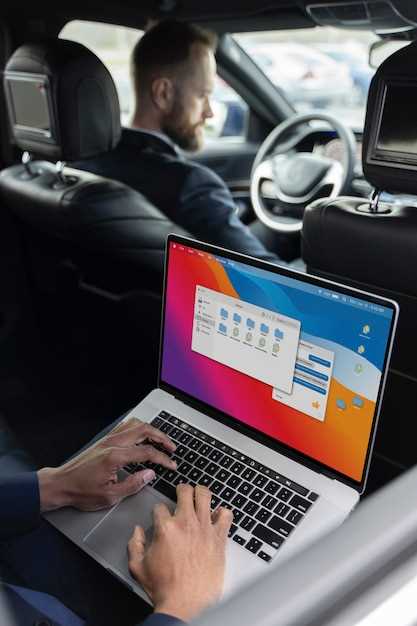
As the automotive industry continues to evolve, Ford stands at the forefront of innovation, particularly in the realm of self-driving technology. With the increasing demand for safer and more efficient transportation solutions, Ford has prioritized research and development in autonomous driving systems. This commitment not only showcases the company’s dedication to technological advancement but also reflects its understanding of the changing needs of consumers.
Ford’s approach to self-driving technology emphasizes a robust framework designed to integrate autonomous features seamlessly into everyday driving experiences. By investing heavily in artificial intelligence, sensor technology, and data analytics, Ford aims to enhance road safety and improve urban mobility. The development of advanced algorithms enables Ford vehicles to navigate complex environments, making them even more capable and reliable.
The company’s vision extends beyond just creating autonomous vehicles; it encompasses a holistic strategy that integrates infrastructure and user experience. As Ford forges partnerships with tech firms and municipalities, it aims to build an ecosystem that supports self-driving capabilities, ensuring that the transition to autonomous transportation is smooth and beneficial for all stakeholders involved. This forward-thinking mindset positions Ford as a leader in the shift towards a safer and more sustainable future in mobility.
Innovative Strategies for Developing Self-Driving Capabilities

Ford recognizes the pivotal role that tech plays in advancing its self-driving initiatives. One of the key strategies involves extensive collaboration with tech companies specializing in artificial intelligence and machine learning. By leveraging cutting-edge algorithms, Ford aims to enhance the decision-making processes of autonomous vehicles, enabling them to navigate complex environments safely.
Another innovative approach is the integration of advanced sensor systems. Ford is committed to developing vehicles equipped with a combination of LiDAR, radar, and cameras to create a comprehensive perception ecosystem. This multi-faceted sensing capability allows for greater reliability and accuracy in understanding the surrounding environment, crucial for safe autonomous operation.
Moreover, Ford’s investment in simulation technology is transforming the testing and validation process for self-driving systems. By utilizing advanced simulation platforms, engineers can replicate various driving scenarios in a controlled environment, identifying potential issues before real-world deployment. This strategy enables rapid iteration and improvement of algorithms.
Ford also emphasizes the importance of regulatory partnerships to facilitate the safe rollout of autonomous technologies. By actively engaging with policymakers and regulatory bodies, the company is working to create frameworks that support the development of self-driving vehicles while ensuring public safety and acceptance.
Lastly, Ford is exploring user-centric design in their self-driving solutions. By incorporating feedback from potential users, the company aims to enhance the overall experience of autonomous driving, addressing concerns related to safety, convenience, and accessibility. This user-first approach is essential for gaining consumer trust in the forthcoming era of autonomous vehicles.
Impact of Ford’s Autonomous Vehicles on Urban Mobility

Ford’s commitment to self-driving technology is poised to significantly transform urban mobility. With the introduction of autonomous vehicles, cities can expect enhanced traffic efficiency and reduced congestion. Self-driving cars have the potential to optimize routes in real-time, which helps to minimize travel times and improve overall traffic flow.
Moreover, autonomous vehicles aim to improve safety by minimizing human error, which is a leading cause of accidents in urban areas. As self-driving tech evolves, the reduction in collisions can lead to lower insurance costs and decreased emergency response times. This shift towards safer transportation options can enhance public trust in the mobility ecosystem.
Ford’s autonomous vehicles are also designed to integrate with existing urban infrastructure. By communicating with traffic lights and other smart city technologies, these vehicles can further streamline movement and reduce idle times at intersections. This interconnectedness paves the way for a future where cities are not only more navigable but also environmentally sustainable, as autonomous tech encourages the use of electric vehicles, cutting down on emissions.
The societal implications of Ford’s self-driving vehicles extend to equitable access to transportation. With the potential for shared autonomous fleets, underserved communities can benefit from improved mobility options, allowing better access to jobs and essential services. This inclusivity could redefine the urban landscape, making transportation more democratic.
In summary, Ford’s commitment to autonomous driving technology will reshape urban mobility through enhanced safety, efficiency, integration with infrastructure, and increased accessibility, paving the way for smarter, more connected cities.
Partnerships and Collaborations Driving Ford’s Tech Advancements
Ford has strategically formed partnerships and collaborations with various technology companies to enhance its advancements in autonomous driving. By working alongside industry leaders, Ford aims to integrate cutting-edge tech into its vehicles, ensuring a competitive edge in the rapidly evolving automotive sector.
One significant collaboration is with Argo AI, a company specializing in autonomous vehicle technology. This partnership focuses on developing sophisticated self-driving systems, allowing Ford to accelerate its autonomous driving initiatives while leveraging Argo’s expertise in artificial intelligence and machine learning.
Additionally, Ford has joined forces with Google to utilize the latter’s cloud computing capabilities and machine learning technologies. This collaboration facilitates data-driven insights and predictive analytics, enabling Ford to optimize vehicle performance and enhance customer experiences through personalized features.
Innovation is further fueled through partnerships with various startups and tech incubators. These collaborations allow Ford to access emerging technologies and innovative ideas, fostering a culture of creativity within the company. By tapping into the fresh perspectives of smaller tech firms, Ford consistently pushes the boundaries of what is possible in the realm of autonomous driving.
Moreover, Ford’s partnership with Mobileye, an Intel company, enhances its vehicle safety and automation features. Mobileye’s advanced driver-assistance systems (ADAS) contribute to Ford’s commitment to delivering safer and more reliable driving experiences.
Through these strategic alliances, Ford not only solidifies its position in the tech landscape but also ensures that its vehicles are equipped with the latest innovations, ultimately driving the future of autonomous mobility.



